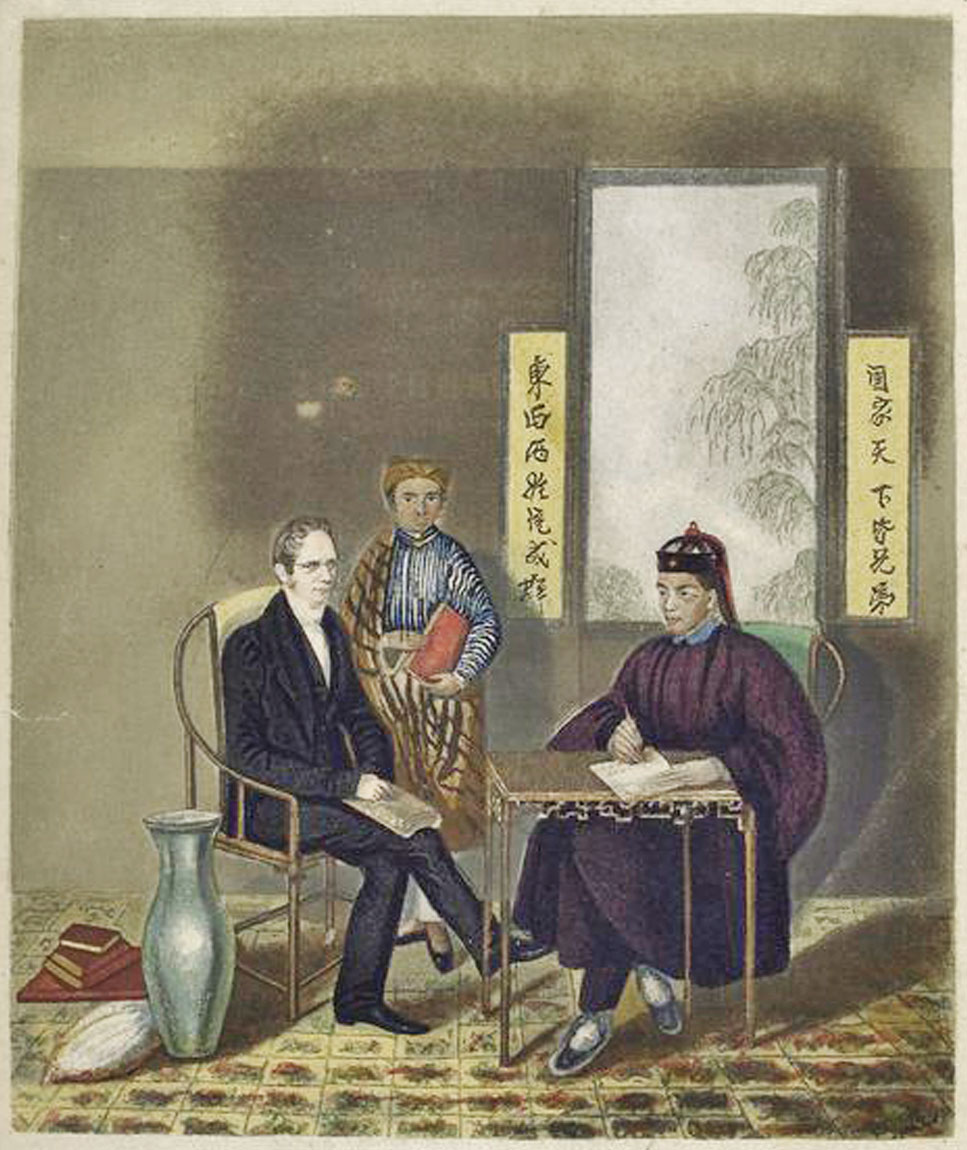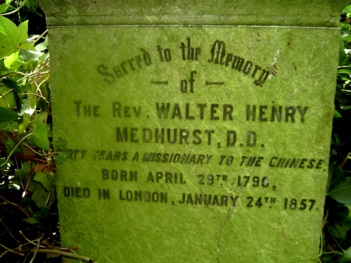|
Chinese And English Dictionary
The ''Chinese and English Dictionary: Containing All the Words in the Chinese Imperial Dictionary, Arranged According to the Radicals'' (1842), compiled by the English Congregationalist missionary Walter Henry Medhurst (1796-1857), is the second major Chinese-English dictionary after Robert Morrison's pioneering (1815-1823) '' A Dictionary of the Chinese Language''. Medhurst's intention was to publish an abridged and cheaper dictionary that still contained all the 47,035 head characters from the (1716) ''Kangxi Dictionary'', which Morrison's huge dictionary included. Medhurst reversed and revised into his Chinese-English dictionary in compiling the (1847-1848) ''English and Chinese Dictionary in Two Volumes''. History Walter Henry Medhurst and Robert Morrison were London Missionary Society (LMS) colleagues and friends. Both were professional printers, missionaries in China, and amateur lexicographers. In an 1817 letter, Morrison told the LMS directors that Medhurst had ... [...More Info...] [...Related Items...] OR: [Wikipedia] [Google] [Baidu] |
Kangxi Dictionary
The ''Kangxi Dictionary'' ( (Compendium of standard characters from the Kangxi period), published in 1716, was the most authoritative dictionary of Chinese characters from the 18th century through the early 20th. The Kangxi Emperor of the Qing dynasty ordered its compilation in 1710 in order to improve on earlier dictionaries, to show his concern for Confucian culture, and to foster the standardization of the writing system. The dictionary takes its name from the Emperor's era name. The dictionary was the largest of the traditional dictionaries, containing 47,035 characters. Some 40% of them are graphic variants, however, while others are dead, archaic, or found only once. Fewer than a quarter of the characters it contains are now in common use. The ''Kangxi Dictionary'' is available in many forms, from Qing dynasty block print editions, to reprints in traditional Chinese bookbinding, to modern revised editions with essays in Western-style hardcover, to a digitized Internet ve ... [...More Info...] [...Related Items...] OR: [Wikipedia] [Google] [Baidu] |
Walter Henry Medhurst
Walter Henry Medhurst (29 April 179624 January 1857), was an English Congregationalist missionary to China, born in London and educated at St Paul's School. He was one of the early translators of the Bible into Chinese-language editions. Early life Medhurst's father was an innkeeper in Ross-on-Wye, Herefordshire. As a young man, Medhurst studied at Hackney College under George Collison and he worked as a printer and typesetter at the Gloucester Herald and the London Missionary Society (LMS). He became interested in Christian missions and the LMS chose him to become a missionary printer in China. He sailed in 1816 to join their station at Malacca, which was intended to be a great printing centre. En route, he called at Madras where, in a little less than three months, he met Mrs Elizabeth Braune, née Martin (1794–1874), marrying her the day before he sailed to Malacca. Malacca and Shanghai Having arrived in Malacca, Medhurst learned Malay, and studied Chinese, Chinese char ... [...More Info...] [...Related Items...] OR: [Wikipedia] [Google] [Baidu] |
List Of Kangxi Radicals
A ''list'' is any set of items in a row. List or lists may also refer to: People * List (surname) Organizations * List College, an undergraduate division of the Jewish Theological Seminary of America * SC Germania List, German rugby union club Other uses * Angle of list, the leaning to either port or starboard of a ship * List (information), an ordered collection of pieces of information ** List (abstract data type), a method to organize data in computer science * List on Sylt, previously called List, the northernmost village in Germany, on the island of Sylt * ''List'', an alternative term for ''roll'' in flight dynamics * To ''list'' a building, etc., in the UK it means to designate it a listed building that may not be altered without permission * Lists (jousting), the barriers used to designate the tournament area where medieval knights jousted * ''The Book of Lists'', an American series of books with unusual lists See also * The List (other) * Listing (di ... [...More Info...] [...Related Items...] OR: [Wikipedia] [Google] [Baidu] |
International Phonetic Alphabet
The International Phonetic Alphabet (IPA) is an alphabetic system of phonetic transcription, phonetic notation based primarily on the Latin script. It was devised by the International Phonetic Association in the late 19th century as a standardized representation of speech sounds in written form.International Phonetic Association (IPA), ''Handbook''. The IPA is used by lexicography, lexicographers, foreign language students and teachers, linguistics, linguists, speech–language pathology, speech–language pathologists, singers, actors, constructed language creators, and translators. The IPA is designed to represent those qualities of speech that are part of wiktionary:lexical, lexical (and, to a limited extent, prosodic) sounds in oral language: phone (phonetics), phones, phonemes, Intonation (linguistics), intonation, and the separation of words and syllables. To represent additional qualities of speech—such as tooth wiktionary:gnash, gnashing, lisping, and sounds made wi ... [...More Info...] [...Related Items...] OR: [Wikipedia] [Google] [Baidu] |
Denti-alveolar Consonant
In linguistics, a denti-alveolar consonant or dento-alveolar consonant is a consonant that is articulated with a flat tongue against the alveolar ridge and the upper teeth, such as and in languages such as French, Italian and Spanish. That is, a denti-alveolar consonant is (pre)alveolar and laminal rather than purely dental. Although denti-alveolar consonants are often labeled as " dental" because only the forward contact with the teeth is visible, the point of contact of the tongue that is farthest back is most relevant, as it defines the maximum acoustic space of resonance and gives a characteristic sound to a consonant. In French, the contact that is the farthest back is alveolar or sometimes slightly pre-alveolar. In Spanish, and are laminal denti-alveolar, and and are alveolar but assimilate to a following or . Similarly, in Italian, , , , are denti-alveolar, and and are alveolar. The dental click Dental (or more precisely denti-alveolar) clicks are a fami ... [...More Info...] [...Related Items...] OR: [Wikipedia] [Google] [Baidu] |
Aspirated Consonant
In phonetics, aspiration is the strong burst of breath that accompanies either the release or, in the case of preaspiration, the closure of some obstruents. In English, aspirated consonants are allophones in complementary distribution with their unaspirated counterparts, but in some other languages, notably most South Asian languages (including Indian) and East Asian languages, the difference is contrastive. In dialects with aspiration, to feel or see the difference between aspirated and unaspirated sounds, one can put a hand or a lit candle in front of one's mouth, and say ''spin'' and then ''pin'' . One should either feel a puff of air or see a flicker of the candle flame with ''pin'' that one does not get with ''spin''. Transcription In the International Phonetic Alphabet (IPA), aspirated consonants are written using the symbols for voiceless consonants followed by the aspiration modifier letter , a superscript form of the symbol for the voiceless glottal fricative . Fo ... [...More Info...] [...Related Items...] OR: [Wikipedia] [Google] [Baidu] |
Stop Consonant
In phonetics, a plosive, also known as an occlusive or simply a stop, is a pulmonic consonant in which the vocal tract is blocked so that all airflow ceases. The occlusion may be made with the tongue tip or blade (, ), tongue body (, ), lips (, ), or glottis (). Plosives contrast with nasals, where the vocal tract is blocked but airflow continues through the nose, as in and , and with fricatives, where partial occlusion impedes but does not block airflow in the vocal tract. Terminology The terms ''stop, occlusive,'' and ''plosive'' are often used interchangeably. Linguists who distinguish them may not agree on the distinction being made. The terms refer to different features of the consonant. "Stop" refers to the airflow that is stopped. "Occlusive" refers to the articulation, which occludes (blocks) the vocal tract. "Plosive" refers to the release burst (plosion) of the consonant. Some object to the use of "plosive" for inaudibly released stops, which may then instead be ca ... [...More Info...] [...Related Items...] OR: [Wikipedia] [Google] [Baidu] |
Aspiration (phonetics)
In phonetics, aspiration is the strong burst of breathing, breath that accompanies either the release or, in the case of preaspiration, the Stop consonant#articulation, closure of some obstruents. In English, aspirated consonants are allophones in complementary distribution#In phonology, complementary distribution with their unaspirated counterparts, but in some other languages, notably most Languages of South Asia, South Asian languages (including Languages of India, Indian) and East Asian languages, the difference is Contrastive distribution#Phonology, contrastive. In dialects with aspiration, to feel or see the difference between aspirated and unaspirated sounds, one can put a hand or a lit candle in front of one's mouth, and say ''spin'' and then ''pin'' . One should either feel a puff of air or see a flicker of the candle flame with ''pin'' that one does not get with ''spin''. Transcription In the International Phonetic Alphabet (IPA), aspirated consonants are written usi ... [...More Info...] [...Related Items...] OR: [Wikipedia] [Google] [Baidu] |
Apostrophe
The apostrophe ( or ) is a punctuation mark, and sometimes a diacritical mark, in languages that use the Latin alphabet and some other alphabets. In English, the apostrophe is used for two basic purposes: * The marking of the omission of one or more letters, e.g. the contraction of "do not" to "don't". * The marking of possessive case of nouns (as in "the eagle's feathers", "in one month's time", "at your parents' ome). The word "apostrophe" comes ultimately from Greek (, ' he accent ofturning away or elision'), through Latin and French. For use in computer systems, Unicode has code points for three different forms of apostrophe. Usage in English Historical development The apostrophe was first used by Pietro Bembo in his edition of '' De Aetna'' (1496). It was introduced into English in the 16th century in imitation of French practice. French practice Introduced by Geoffroy Tory (1529), the apostrophe was used in place of a vowel letter to indicate elision (as ... [...More Info...] [...Related Items...] OR: [Wikipedia] [Google] [Baidu] |
Initial (linguistics)
A syllable is a unit of organization for a sequence of speech sounds typically made up of a syllable nucleus (most often a vowel) with optional initial and final margins (typically, consonants). Syllables are often considered the phonological "building blocks" of words. They can influence the rhythm of a language, its prosody, its poetic metre and its stress patterns. Speech can usually be divided up into a whole number of syllables: for example, the word ''ignite'' is made of two syllables: ''ig'' and ''nite''. Syllabic writing began several hundred years before the first letters. The earliest recorded syllables are on tablets written around 2800 BC in the Sumerian city of Ur. This shift from pictograms to syllables has been called "the most important advance in the history of writing". A word that consists of a single syllable (like English ''dog'') is called a monosyllable (and is said to be ''monosyllabic''). Similar terms include disyllable (and ''disyllabic''; also ''bis ... [...More Info...] [...Related Items...] OR: [Wikipedia] [Google] [Baidu] |
Standard Chinese Phonology
This article summarizes the phonology (the sound system, or in more general terms, the pronunciation) of Standard Chinese (Standard Mandarin). Standard Chinese phonology is based on the Beijing dialect of Mandarin. Actual production varies widely among speakers, as they introduce elements of their native varieties (although television and radio announcers are chosen for their ability to produce the standard variety). Elements of the sound system include not only the segments – the vowels and consonants – of the language but also the tones that are applied to each syllable. Standard Chinese has four main tones, in addition to a neutral tone used on weak syllables. This article represents phonetic values using the International Phonetic Alphabet (IPA), noting correspondences chiefly with the Pinyin system for transcription of Chinese text. For correspondences with other systems, see the relevant articles, such as Wade–Giles, Bopomofo (Zhuyin), Gwoyeu Romatzyh, etc., and Rom ... [...More Info...] [...Related Items...] OR: [Wikipedia] [Google] [Baidu] |



